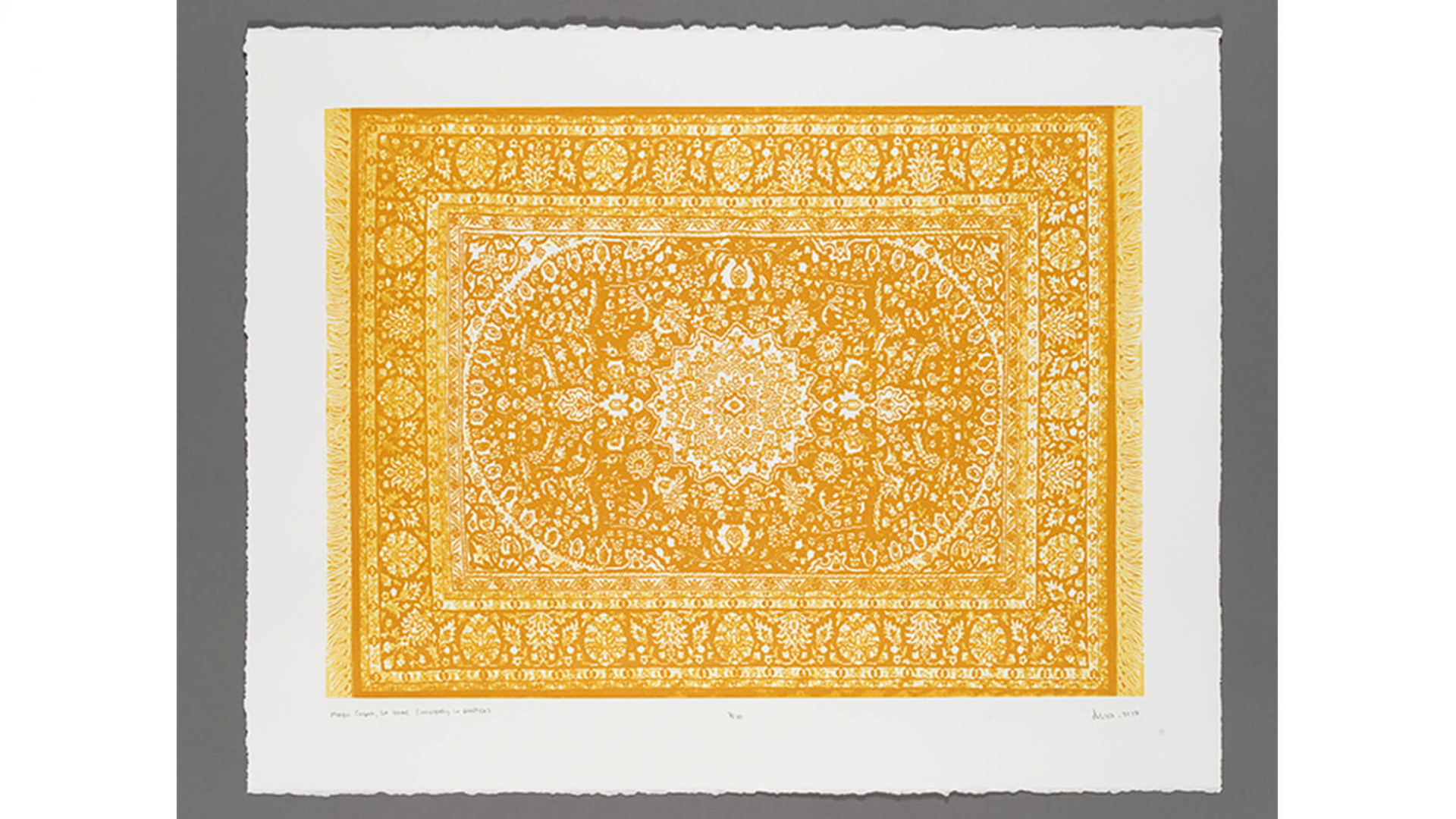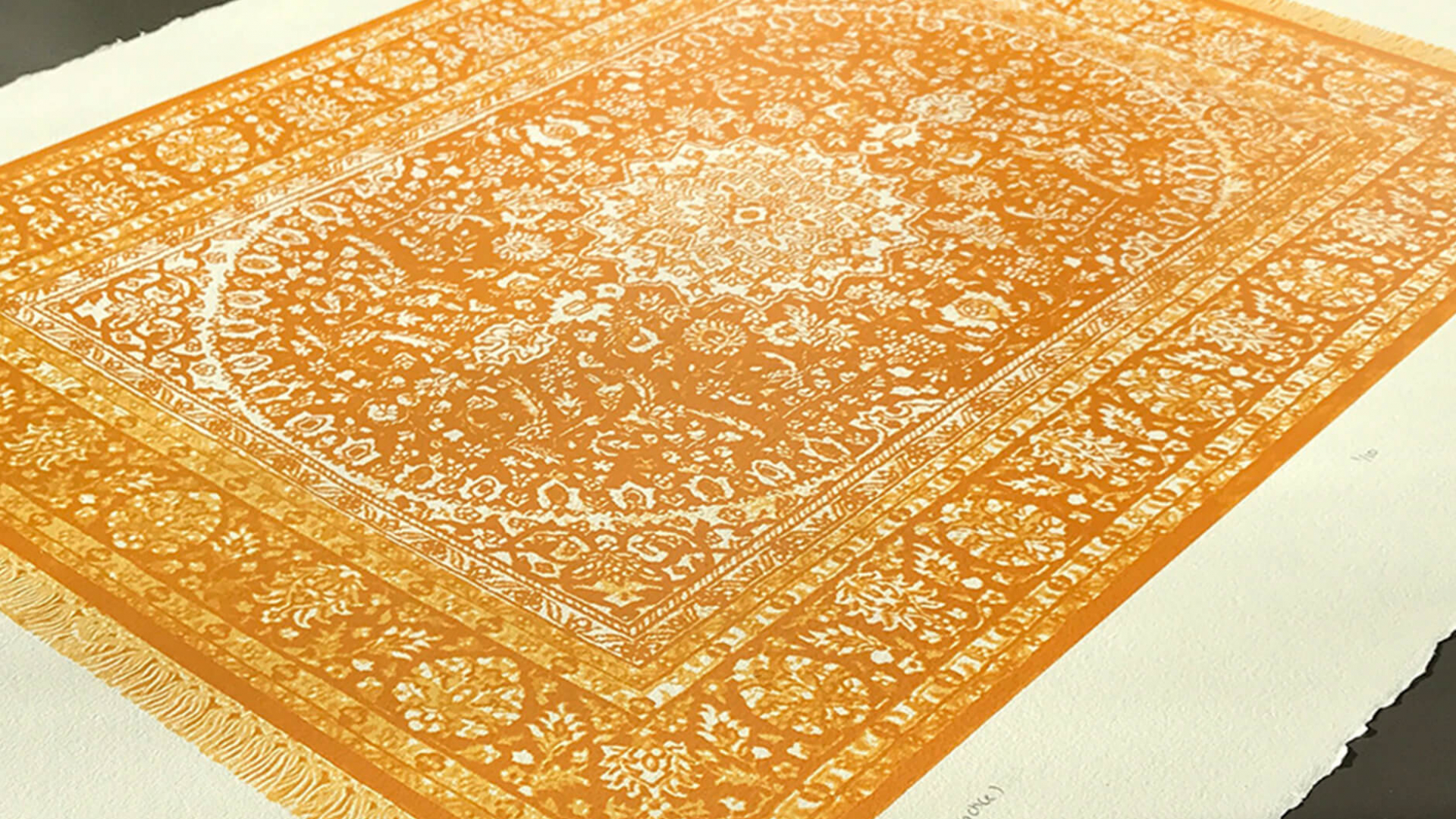Winnipeg-born artist Divya Mehra’s work observes the stark contrast between the consumption of foreign culture and the rejection of foreigners
Much of Winnipeg-born artist Divya Mehra’s work is text based, often combining visual images, and can take the scale of installation art. The mixed-media work explores issues of race and gender inequality through manipulating codes, aesthetics, and references from popular culture and mainstream media.
Often, Mehra’s exploration rests on her own observations of the contradictions between East and West when juxtaposed with mainstream and marginal communities in Canada. She works with materials ranging from neon, t-shirts, candy hearts, video, slogans, maps and flags as recognizable visual forms that carry meaning in contemporary culture.
In this print, Mehra evokes the form of the oriental rug as a symbol of the Other and as a sign of western desire to consume eastern commodities. Printed in a bright yellow and gold toned pattern, this image conjures up elite interiors, Disney movies with flying carpets, belly dancers, and “exotic” cuisine. The title Magic Carpet, Go Home (invisibility in practice) evokes the West’s embrace and consumption of “Eastern” culture but the rejection of people from the “East” who are perceived as “foreigners” or “immigrants” and told to “go home”.
Mehra argues that both reactions are connected in the way visible minorities become invisible in mainstream western culture. The “oriental” carpet is a repeating motif in Mehra’s work, first installed in 2014 as a compilation of different textiles. She has printed it on paper, a fragile medium, and allowed people to walk on it. She has also mass produced it on a roll, hung it near the ceiling as a runner, printed it on sheets as give-aways, going against the handcrafted, unique and high-end associations such carpets occupy in the western market.
Even the monotone colour—here gold but in other examples mostly black and white—goes against the usual variety of colours and patterns. At every turn, the manner in which the motif is produced, seems to invert the form and function of the original carpet, rendering its conceptual intent void. In this way, Mehra seems to withhold the qualities that turn the carpet into a commodity. Similarly, she refuses to play the expected role of the diasporic South Asian artist in North America through the artwork she creates. Oriental carpets are like diasporic artists, she seems to say, both are desired by a western consumer as a commodity to beautify their home or to add diversity to an art exhibition. Through this artwork, she subverts expectations for each.


